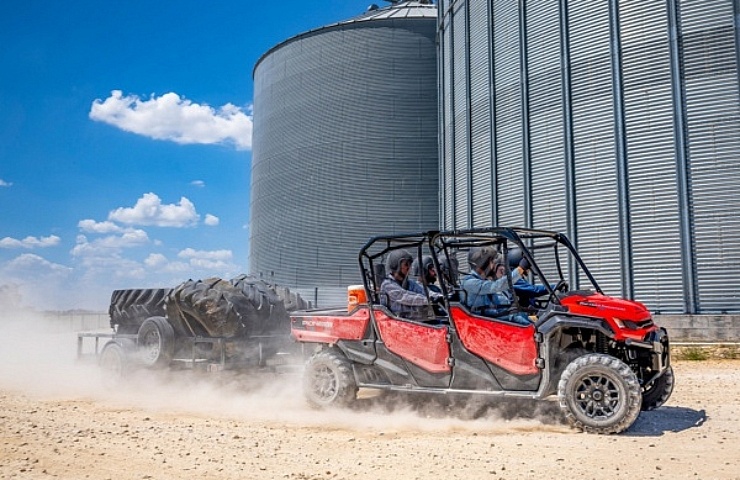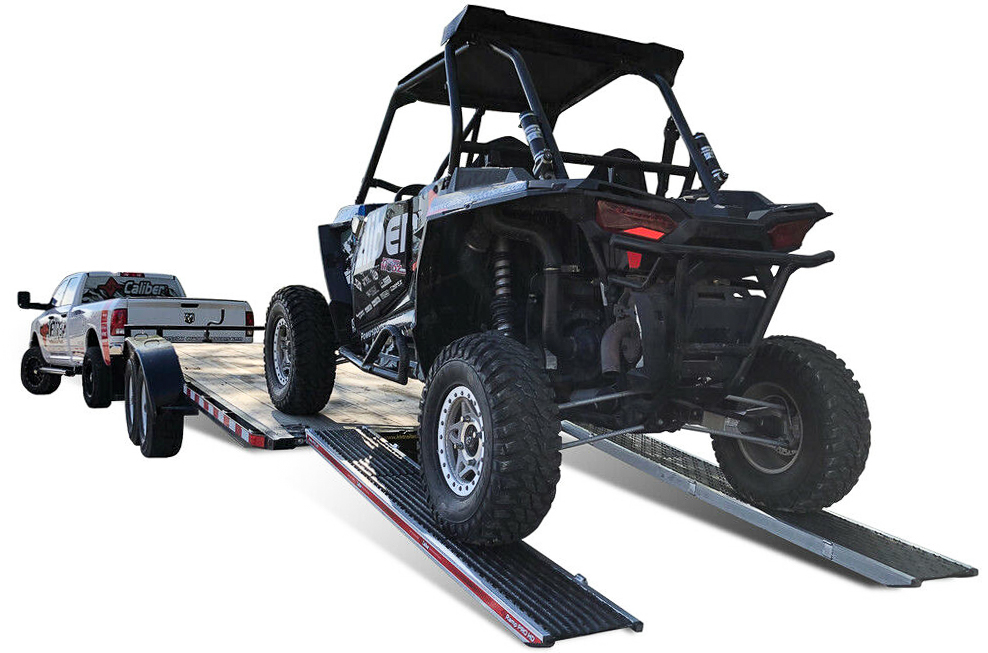Contents
These vehicles are also called side-by-sides or ROVs (recreational off-highway vehicles). The leading manufacturers of UTVs include Can-Am, Honda, Kawasaki, Polaris, and Yamaha.
UTVs have several common characteristics:
- Four wheels
- Steering wheel
- Gas and brake pedals
- Driver and passenger seating side by side
- Either a partially or wholly enclosed cabin with a rollover protection system (ROPS)
They usually have automotive-style features such as seat belts, headlights, and bumpers. Nonetheless, they are generally not designed to be street-legal. UTVs can have single- or double-row seating and can seat two or three across for a capacity of two to six passengers.
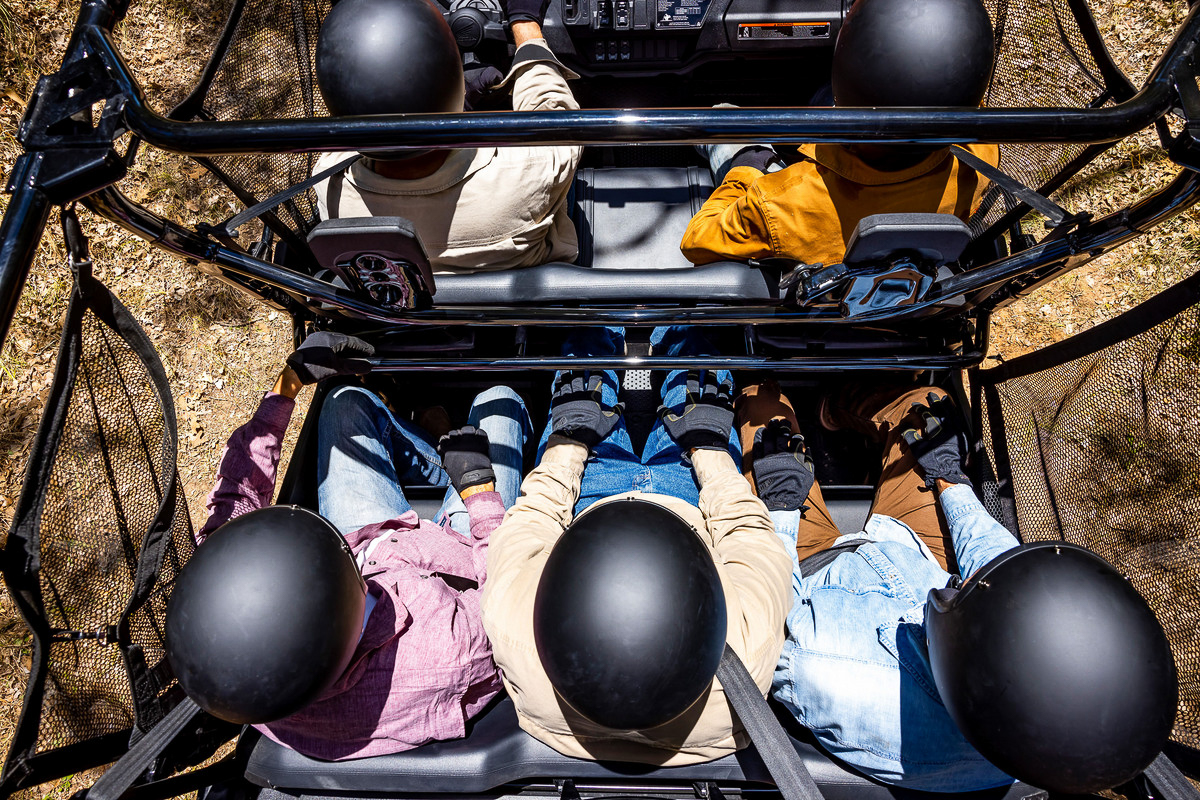
(Source: Honda)
Types of UTVs
- Utility – Highly functional UTVs are built for agricultural and commercial uses on large properties and campuses, such as ranches, golf courses, and construction sites. These UTVs can move equipment, materials, or people to and from job sites. They often have pickup-truck-style beds and specialize in towing or hauling.
- Recreational – Outdoor enthusiasts use UTVs for camping, fishing, hunting, or enjoying a ride through nature. Recreational UTVs offer better trail performance thanks to higher ground clearance and better suspension than utility UTVs.
- Sport – UTVs can also be built with long-travel suspension, powerful acceleration, fortified chassis, and rollover protection. This allows sport-oriented UTVs to achieve peak performance in trail-riding, rock-crawling, and off-road racing.
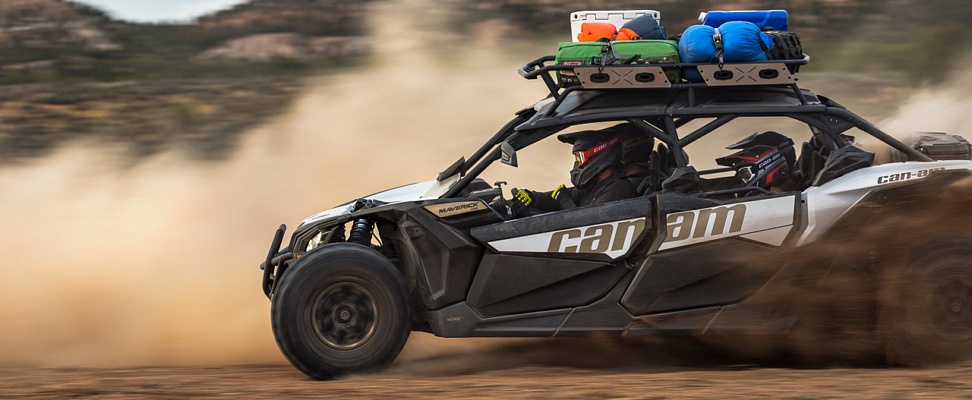
(Source: Can-Am Off Road)
UTV History
Today’s booming UTV trend can be traced back to the popularity of dune buggies and Jeeps in the 1970s. Everything changed when Kawasaki introduced the Mule in 1988. The Mule, which stands for multi-use light equipment, paved the way for utility side-by-sides from Can-Am, Honda, Polaris, and Yamaha. During this same time, John Deere started producing workhorse platforms specializing in commercial and agricultural use.
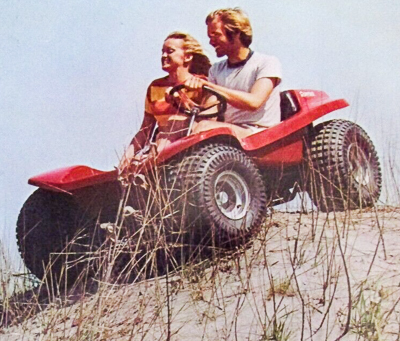
An early ’70s Ruppster mini dune buggy from Rupp Industries
Outdoor enthusiasts quickly adapted these utility machines for recreation and racing. In the 1990s, people started modifying golf carts for off-road recreation.
In 2004, Yamaha’s Rhino came along, featuring greater ground clearance, increased suspension travel, and more power. Polaris then arrived on the scene with its Ranger RZR in 2007, upping the ante in the performance category and arguably becoming the industry’s first dedicated sport UTV. Originally launched as a sub-brand of the utility-minded Ranger, the RZR eventually dropped the Ranger label to become its own model line, pushing the envelope for top speeds and off-road capability.
How Do People Use UTVs?
Today, you can find utility side-by-sides at ranches, farms, construction sites, baseball stadiums, golf courses, and campuses. They come in sizes, trims, and styles suited to nearly any demand. Hard-working UTVs also offer onboard comforts such as waterproof storage, charging ports, windshields, comfortable seats, and protection from the elements.

(Source: Can-Am Off Road)
Outdoor enthusiasts also enjoy using UTVs—sometimes in full camo wraps—for camping, hunting, and fishing. Head out for fun on the trail or in the dunes, or take the family to the lake with a recreational UTV. They offer cargo-hauling capability for a weekend in the woods.
Top-of-the-line sports UTVs can have 1,000cc turbo-charged engines and long-travel suspension, similar to what you might find on a full-size professional off-road race truck. Breathtaking acceleration and smart suspension can immediately adjust to speed and terrain, while bucket-style seats keep the passengers secure.
Desirable UTV Features
When considering the best UTV, the first question is how you will use this vehicle. Bigger is not always better. A smaller UTV allows you to maneuver in small spaces on the trail or when loading and unloading goods. Pricing can vary significantly among UTV models, but you are bound to find something that meets your needs within your price range.
Other factors to consider are transportation and storage:
- Do you have a trailer to transport the UTV?
- Do you need one that can fit in the bed of a truck with a ramp?
- Do you have a garage or warehouse to store your UTV? How about a cover?
Popular UTV Models
Polaris RZR Pro R
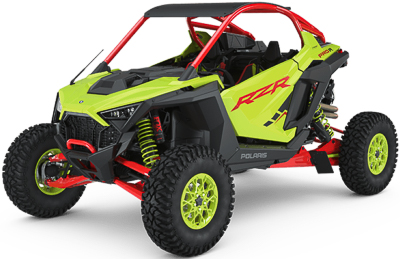
The 225 horsepower Polaris RZR Pro R 4 Ultimate is the king of UTVs.
The Sport UTV landscape is currently dominated by the Polaris RZR Pro R. This UTV spares nothing regarding technology and performance. Powered by a 2000cc inline 4-cylinder DOHC engine that produces 225 horsepower, the RZR Pro R 4 Ultimate is the undisputed king of power and the fastest UTV available today.
Shop now for Polaris RZR UTVsCan-Am Defender

The Can-Am Defender MAX X MR stands tall above the rest.
Can-Am offers over 20 hard-working Defender models, and the MAX X MR stands the tallest. It’s an off-road powerhouse ready to take on the wildest terrain, including thick mud and swamps. Seating up to six, ample storage and a payload capacity of up to 1,750 pounds means the Defender MAX X MR can take you places most other vehicles can’t reach.
Shop now for Can-Am UTVsHonda Pioneer
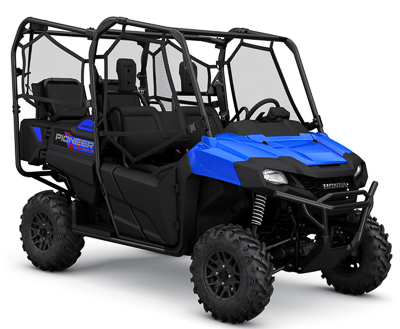
The mid-range Honda Pioneer 700 Deluxe packs high-end features. (Source: Honda)
The Honda Pioneer brings fun and work together into a seven model lineup. The mid-range Pioneer 700-4 Deluxe balances comfort and utility with accommodations for up to four passengers and a folding rear seat for cargo hauling. The 675cc engine is capable and durable for utility and recreational performance.
Shop now for Honda UTVsKawasaki Mule
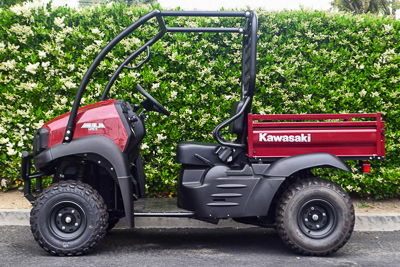
The two-passenger Kawasaki Mule SX is big on value and capability.
Kawasaki sells over ten models of its long-running Mule, and when it comes to value, it’s hard to beat the Mule SX. Its compact 401cc engine is air-cooled for easy maintenance. Selectable two- and four-wheel drive, and a dual-mode rear differential, means it can tread lightly over manicured landscapes and produce more traction when the task demands it.
Shop now for Kawasaki UTVs
